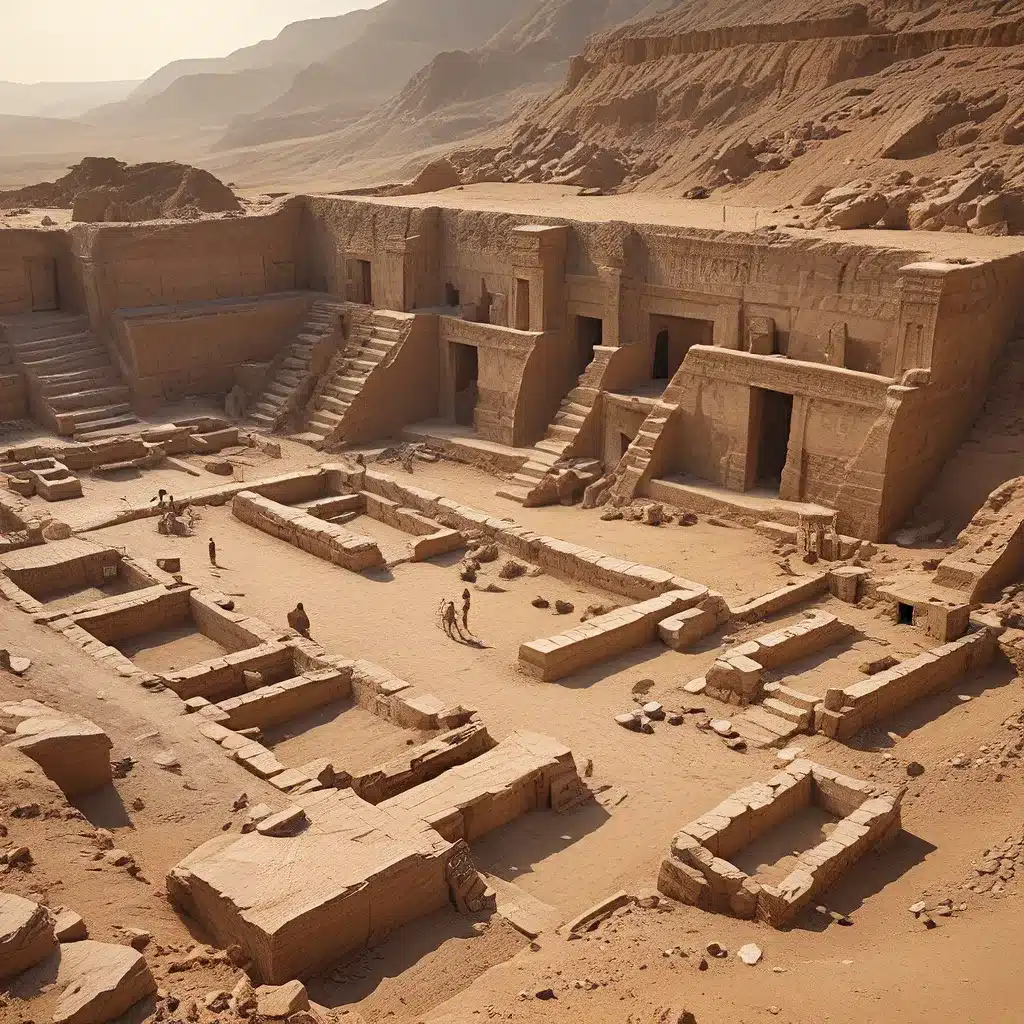
In the ever-evolving landscape of ancient history, the archaeological discoveries of the past century have shed remarkable light on the vibrant cultures and civilizations that once thrived across the globe. From the Kurgan Hypothesis challenging our understanding of European prehistory to the unearthing of enigmatic goddess-centric societies, the field of archaeology has continuously pushed the boundaries of our knowledge, unveiling the hidden wonders of forgotten worlds.
Marija Gimbutas and the Goddess Movement
At the forefront of this archaeological awakening stands the remarkable work of Marija Gimbutas, a Lithuanian-American archaeologist and scholar whose groundbreaking research has transformed our perspectives on the ancient world. Gimbutas, a pioneering figure in the field of archaeomythology, dedicated her career to uncovering the rich and complex civilizations of Old Europe, a region that flourished long before the rise of the better-known Bronze Age cultures.
Gimbutas’ seminal work, “The Language of the Goddess,” unveiled a remarkable discovery: the widespread prevalence of female-centric symbolism and imagery across numerous ancient cultures, from the Neolithic to the Bronze Age. By meticulously cataloging and analyzing the abundance of female figurines, shrines, and ritual objects found in archaeological excavations, Gimbutas was able to reconstruct a comprehensive understanding of the Goddess-based cosmology that once permeated these societies.
Gimbutas’ groundbreaking work challenged the established narratives of history, which had long been dominated by patriarchal perspectives. Her research highlighted the existence of a harmonious, egalitarian way of life that emphasized the sacred role of the feminine divine, a radical departure from the more militaristic and hierarchical societies that would later emerge.
The significance of Gimbutas’ work cannot be overstated. By unearthing and giving voice to the forgotten civilizations of Old Europe, she sparked a global renaissance in the study of ancient goddess-centered cultures, giving rise to the Goddess Movement that continues to influence various fields, from spirituality to feminism.
Uncovering the Mysteries of Old Europe
Gimbutas’ work focused on the Neolithic and Chalcolithic periods of Europe, a time when the continent was home to a diverse array of thriving, interconnected communities. These societies, often referred to as “Old Europe,” were characterized by their non-hierarchical social structures, reverence for the natural world, and their veneration of the female divine.
Through her meticulous analysis of archaeological evidence, Gimbutas identified a rich, symbolic language that permeated the material culture of these ancient civilizations. From the spiraling motifs found on pottery and figurines to the representations of the life-giving mother goddess, Gimbutas was able to piece together a comprehensive understanding of the cosmological beliefs and ritual practices that underpinned the lives of these forgotten peoples.
One of the most significant aspects of Gimbutas’ work was her identification of the Kurgan Hypothesis, which challenged the widely accepted narrative of European prehistory. This hypothesis proposed that the arrival of patriarchal, horse-riding Indo-European cultures from the Eurasian steppes disrupted the egalitarian, goddess-worshipping societies of Old Europe, ushering in a new era of warfare, social stratification, and the subjugation of women.
Recent DNA evidence has lent credence to Gimbutas’ Kurgan Hypothesis, underscoring the profound impact that the influx of these Indo-European invaders had on the cultural, social, and religious landscapes of ancient Europe.
Archaeological Discoveries and the Goddess Enigma
Gimbutas’ groundbreaking research was fueled by the wealth of archaeological discoveries that emerged during her lifetime, many of which challenged the dominant historical narratives and sparked new avenues of inquiry.
One particularly intriguing example is the Vučedol Culture, a Bronze Age society that flourished along the Danube River in present-day Croatia. Excavations at Vučedol have unearthed a rich trove of artifacts, including intricate ceramic vessels, elaborate burial practices, and numerous female figurines that suggest a vibrant, goddess-centric worldview.
Similarly, the Cucuteni-Trypillia Culture, which spanned parts of modern-day Ukraine, Moldova, and Romania, has provided archaeologists with a treasure trove of insights into the sophisticated, interconnected societies that once populated the region. The abundance of female-focused imagery, such as spiral-adorned pottery and multifaceted goddess depictions, has led scholars to reevaluate the central role of the feminine divine in these ancient civilizations.
Discoveries of this nature have not only challenged our understanding of the past but have also raised profound questions about the complex relationship between gender, power, and spirituality in ancient societies. As researchers continue to uncover new archaeological sites and artifacts, the mysteries surrounding these forgotten civilizations continue to unfold, inviting us to rethink our assumptions about the human experience throughout history.
The Significance of Archaeological Advancements
The archaeological advancements of the past century have been nothing short of transformative, shedding light on the rich tapestry of ancient cultures that have long been obscured by the dominant historical narratives. From the groundbreaking work of Marija Gimbutas to the ongoing excavations of enigmatic sites like Vučedol and Cucuteni-Trypillia, these discoveries have profoundly challenged our understanding of the past, opening up new avenues of inquiry and inspiring a deeper appreciation for the diverse and complex civilizations that once thrived across the globe.
As we continue to delve into the mysteries of the ancient world, the field of archaeology remains a vital tool for unlocking the secrets of our shared human heritage. By unearthing the remnants of long-forgotten societies, archaeologists and researchers are able to reconstruct the intricate networks of belief, culture, and technology that shaped the course of human history, ultimately expanding our perspectives and challenging our preconceptions about the past.
The ongoing archaeological awakening is not merely an intellectual pursuit; it is a profound exploration of the human experience, one that holds the power to transform our understanding of ourselves and our place in the world. As we continue to uncover the wonders of forgotten civilizations, we are reminded of the resilience, creativity, and ingenuity that have defined the human story, inspiring us to approach the present and the future with a renewed sense of wonder and possibility.


